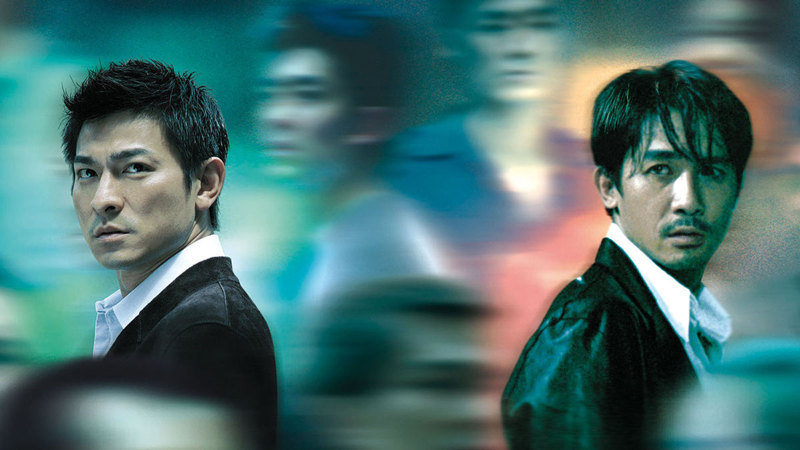“Rust and Bone” is an odd title for a film, and after watching it I still couldn’t tell you what it means. Then again, “Rust and Bone” is an odd film as well. If you had the subtitles and volume switched off, you’d swear it was an indie drama because of the quirky situations that its characters find themselves in. It really sounds like what would pass for a high-concept R-rated film in the indie community:
Let’s bring together a killer whale trainer who has an accident, and an irresponsible drifter of a brother who loves boxing and brings his five year old to sponge off of a sister who’s barely making ends meet with her job as a grocery store cashier. Then let’s make it so he’s an irresponsible guy who exists mostly on an animalistic level—he “fucks” a lot of one-night stands, which is what he calls a “natural” evening, and he eats and drinks and fights because it’s fun. And work? In a quirky film he can’t have an ordinary job, so here he falls in with an illicit (as in alleys and backstreets) fight manager whose day job is secretly (and illegally) installing security cameras in stores and offices so employers can catch their employees slacking off and fire them.
But indie films are not shot on the French Riviera and they do not star Oscar winner Marion Cotillard (“La vie en rose”). And, of course, they aren’t French language movies with English subtitles.
I’ve seen a lot of romances and a lot of “buddy” pictures, but to my recollection this is the first “fuck buddy” movie I’ve seen. And truthfully, it’s one of the things that keeps the film from turning into just another romance. So does having two main characters that are seriously flawed and complicated.
The animalistic fighter and the animal trainer who develop a symbiotic relationship might be a little “pat,” but Cotillard as Stéphanie and Matthias Schoenaerts (“Bullhead”) as Alain are complex-enough characters to make you look past the artifice and just try, like everyone else in the film, to understand them. Stéphanie has a wild streak in her, and because we never get enough of a backstory for either character we try to figure her out as we go along. Same with Alain, whose untamed nature is balanced by a nice-guy streak that surfaces when, working as a bouncer at a rowdy club, he comes to Stéphanie’s assistance. She, meanwhile, surprises when she takes an interest in his street fighting.
“Rust and Bone” is written and directed by Jacques Audiard, whose “A Prophet” (2009) was an Oscar nominee for Best Foreign Language Film. The Academy overlooked this one, but “Rust and Bone” received Golden Globe nominations for Best Foreign Language Film and Best Actress (Cotillard). But let’s face it, 2012 was a banner year for films, with so many great ones produced that not every one could make it to the awards podium.
Audiard crafts a film with logical scenic construction yet surprising turns of events, with the drama never devolving into melodrama. And Stéphane Fontaine’s cinematography is a delight, whether the shots are underwater, backcountry, back-alley, or back bedroom.
The climax might be a little predictable and contrived, but for the most part “Rust and Bone” is a drama about two people whose relationship really is complicated, because their inner and outer lives are complicated. It’s a story that brings together quirky and unusual situations that, nonetheless, represent the kind of relationships that a lot of ordinary people find themselves in. Maybe that’s why “Rust and Bone” is ultimately a memorable film.
“Rust and Bone” is rated R for “strong sexual content, brief graphic nudity, some violence and language.”
Video:
“Rust and Bone” is presented in 2.40:1 widescreen, and the AVC/MPEG-4 transfer to a 50GB disc is sparkling. No compression issues, no artifacts, no banding (not even in those vulnerable underwater scenes) and nothing to take away from the emotional tension of the film. Colors are brilliant in some scenes, dingy-but-faithful in others, all related to the lighting and surroundings. But it’s a faithful video presentation that exudes normalcy in ways that the characters can only approach.
Audio:
The featured audio is French DTS-HD MA 5.1, with subtitles in English. Dialogue drives the film, but in club scenes with that driving techno beat the room pulses with sound, and in the underwater and beach sequences the sound is pure but natural.
Extras:
The big bonus feature is an audio commentary with the director and co-writer Thomas Bidegain, who talk about what they conceptualized and how difficult, at times, it was to film. They cover the usual ground of commenting on the stars’ performances and the casting of other minor characters—especially the boy, Sam (Armand Verdure)—and offer plenty of scene-specific remarks as well.
There’s commentary as well on some deleted scenes, while a substantial making-of film is shot by Antonin Peretjatko. Also included is “On the Red Carpet: Toronto International Film Festival” and a “VFX Breakdown by Mikros [Image],” the company that designed and executed the visual effects.
Bottom line:
Given the complicated nature of their character’s relationship it would be too easy to say that Marion Cotillard and Matthias Schoenaerts have great chemistry, but they certainly manage to depict a friends-with-benefits situation with all the awkwardness and shifts of emotion that it entails.


